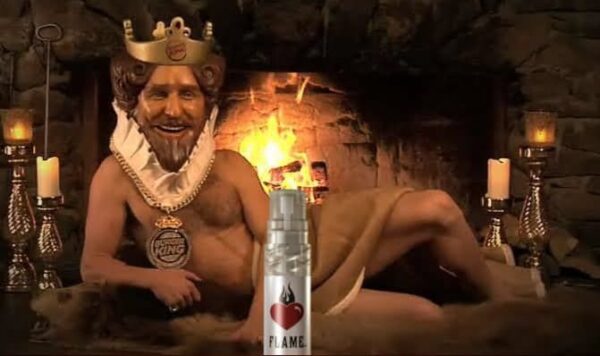Just received another spot from the Burger King radio campaign that’s just started to roll out.
Enjoy…
with DC Douglas, Susie Geiser and Joel McKinnon Miller
Burger King, the global fast-food titan known for flame-grilled burgers, has a rich history that dates back to 1953. Originally founded as “Insta-Burger King” in Jacksonville, Florida, by Keith J. Kramer and Matthew Burns, it started with a simple but then-innovative piece of equipment: the “Insta-Broiler,” which could cook 12 patties simultaneously. However, after encountering financial difficulties, the company was purchased and rechristened “Burger King” in 1954 by two of its franchisees, James McLamore and David Edgerton, in Miami. This change marked the true beginning of Burger King as we know it today.
Under McLamore and Edgerton’s leadership, Burger King expanded rapidly, focusing on standardized operations and menu items that have since become iconic. The introduction of the Whopper in 1957, originally costing 37 cents, was a pivotal moment, establishing a signature product that differentiated it from competitors, particularly McDonald’s.
The advertising journey of Burger King is as flavorful and varied as its menu. In 1974, Burger King shook the fast-food landscape with the launch of its “Have it Your Way” campaign. This slogan was revolutionary; it directly challenged the standardized menu of McDonald’s and emphasized customer customization, setting a precedent in consumer marketing. This slogan has been resurrected multiple times over the decades, each time reinforcing Burger King’s commitment to personalization in the fast-food experience.
In the 1980s, Burger King attempted to engage with younger demographics with the introduction of the “BK Kids Club” and its mascot-based advertisements. The strategy was to create a club that children could belong to, thereby fostering a sense of brand loyalty from an early age. This was accompanied by promotional tie-ins with popular films and television shows, leveraging pop culture to maintain relevance with its audience.
The 2000s saw a shift towards a more bold and sometimes controversial marketing approach. The “Subservient Chicken” campaign launched in 2004, featuring a website where users could type commands that the chicken would perform in real-time. This was an early example of interactive online marketing and went viral, significantly boosting the brand’s online presence. Similarly, the “Whopper Freakout” campaign, where customers were told the Whopper had been discontinued, showcased real customer reactions and affirmed the iconic status of the burger.
More recently, Burger King has utilized modern social media platforms to stay relevant and engage in direct dialogue with competitors and customers alike. Campaigns like “McWhopper Proposal,” where Burger King proposed a collaboration with McDonald’s for Peace Day, demonstrated a savvy understanding of viral marketing and brand interaction.
Culturally, Burger King’s advertising strategies have often mirrored or pushed societal trends, from the focus on individuality in the ’70s to the utilization of digital media in the 2000s. Each campaign not only marketed products but also subtly shaped how consumers viewed the act of dining at Burger King—less as a routine fast-food stop and more as a personalized experience.
Through ups and downs, Burger King has managed to maintain its stature as a staple in the fast-food industry. Its keen adaptations to changing marketing trends and consumer preferences, combined with a willingness to innovate, have kept it at the forefront of the industry, continually serving the tastes and preferences of a diverse global customer base.









